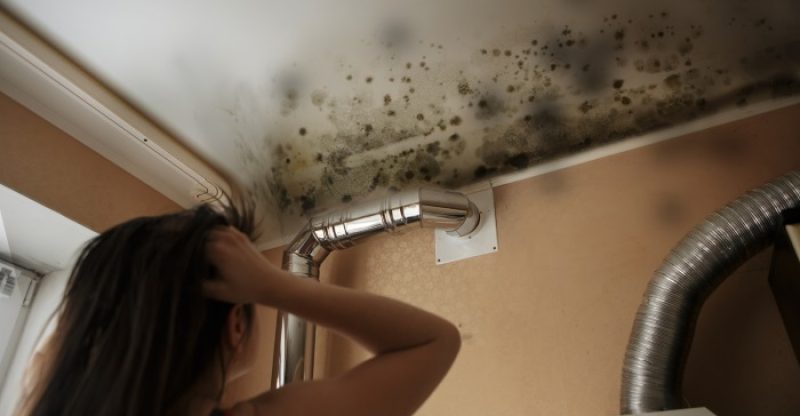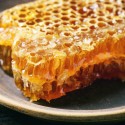Black Mold Symptoms, Causes and Natural Remedies
Getting rid of black mold in your home can be quite an ordeal, and if left untreated, it can cause a variety of health problems.
This mold can even lead to serious health issues, including some chronic symptoms that may have been plaguing you for months or even years.
Understanding what causes black mold, as well as how to treat it and prevent it from forming, is crucial for us to learn.
Our guide helps uncover all these details, and more, including how to eliminate black mold naturally.
Exposure to black mold, including long-term exposure that can lead to black mold poisoning, is a serious problem that you should address immediately once you discover this fungus.
Having mold in your home is not uncommon, and this particular fungus can grow in just about any moist location.
Learning to identify the source of this unwanted microbe and treating it quickly will be critical steps in keeping you and your family healthy.
Keep reading to learn how to rid your home naturally of black mold, as well as treat your symptoms if you have been exposed to this dangerous and unhealthy home invader.
First, we will help you understand what black mold is and how it forms, and then we will discuss how to treat this fungus as well as address any health issues it may cause.
Understanding Black Mold
It is usually easy to tell black mold from other types of fungus that may grow in your home due to its distinctive black color.
Also known as Stachybotrys chartarum or Stachybotrys atra, black mold can grow in just about any indoor location with the right conditions.
In addition to appearing black, this type of fungus can also look greenish or dark gray.
It often has a strong, musty odor, as well (1).
Like other fungi, black mold grows from spores.
These spores are so tiny that you cannot see them with the naked eye.
Mold requires specific conditions in which to grow, including:
- Mold spores – The spores that cause this fungus to enter your home through windows, doors, and ventilation systems. Once in your home, they settle on surfaces like ceilings, walls, draperies, and linens. When these spores have the rest of the necessary conditions to grow, they will reproduce. It is nearly impossible to prevent these spores from entering your home, so it is essential you deprive mold of the other necessary conditions in which they live if you want to avoid having it.
- Food – Black mold consumes organic material of all kinds, preferring surfaces with high amounts of cellulose. Paper, wood, drywall, cardboard, and particleboard are all excellent food sources, as are lint and dust when they contain cellulose.
- Oxygen – While black mold cannot reproduce without oxygen, it can lie dormant without it, waiting patiently until it has the necessary supply to begin growing again.
- Moisture – This is the most critical element required for the growth of black mold. Without sufficient moisture, it will not thrive. This type of fungus requires more water than any other strain and needs moisture for more extended periods to grow effectively. The most common sources of moisture in a home that contribute to black mold growth include leaky pipes, humidity, leaking roofs, and condensation formed by appliances like dryers and air conditioners.
Mold can grow in any season, can thrive outdoors as well as indoors, and spreads quickly once it takes hold.
Black mold loves warm, damp conditions, so preventing these in your home is key to keeping this pesky fungus at bay.
Symptoms of Black Mold
If you have black mold in your home, you may start to notice symptoms.
These are caused by the mycotoxins that molds release into the air.
These toxins, in large enough quantities, can cause many mild to severe symptoms, including (2):
- Headaches, which can range from mild to severe and chronic
- Fatigue, often chronic in nature
- Itchy or watery eyes
- Unexplained rashes or skin disorders
- Fever
- Sneezing
- Problems of the nose, throat, and mouth caused by irritation of the mucous membranes
- Coughing, sometimes chronic
When you have large amounts of this type of mold in your home, these symptoms can become serious.
If you have an allergy to mold, this can also increase the intensity of your reaction.
Those with respiratory disorders, such as asthma, may also experience a more adverse reaction, as can the very young and very old.
Other signs of exposure to black mold may include nosebleeds, coughing up blood, vomiting, nausea, and even depression (3).
How acutely you experience these types of signs depends a lot on the duration of your exposure, your sensitivity to mold, and the number of spores you inhale.
These all play a role in the development of any mold reactions.
You will likely experience symptoms until you eliminate the mold from your home, so finding the source is essential to halting any adverse responses.
If you believe you may have black mold poisoning, you can seek out a laboratory that tests your urine for chemical markers signaling exposure to black mold mycotoxins.
Causes and Risk Factors of Black Mold
In addition to the necessary conditions listed above, other factors can contribute to the proliferation of black mold in any environment.
While it is true that fungi can withstand extreme temperatures, both hot and cold, this strain grows best in warm conditions around 73 degrees Fahrenheit.
Any room that is between 40 and 100 degrees Fahrenheit, though, is perfect for producing this type of mold.
Black mold grows best with a constant source of moisture, such as standing water, but it can thrive in conditions with humidity as low as 70 percent.
Any place that has a leak, poor ventilation, or a high relative humidity can become a breeding ground for this fungus.
Within a home or other living space, such as a recreational vehicle or boat, black mold is likely to grow if certain situations arise.
Water leaks are a prime cause of growth, and many people have leaks but are unaware.
Water can remain inside walls or ceilings or under floors for a very long time before it becomes noticeable, and these locations are ripe for black mold growth.
Toilets, pipes, air conditioners, washing machines, and roofs are all common sources of water leaks.
If the water leaks or high humidity occur in areas with poor ventilation, you are also likely to have a growth of fungus.
Poor ventilation means moisture can collect, leading to more growth.
Areas such as roof eaves, attics, crawl spaces, basements, and other spaces with poor airflow are common places to see black mold growing.
Homes that have experienced flooding, whether from burst pipes or a weather event, also tend to encourage the growth of this unwanted invader.
When areas of the home are soaked with water, it is difficult to dry them out entirely, leaving residual moisture that becomes trapped inside walls, under carpets, and in ceilings.
These types of materials take a long time – up to several weeks – to dry out fully, which is why they are prime for mold growth while the moisture is dissipating.
Older homes or homes that suffer from lack of maintenance are often breeding grounds for black mold, too.
This fungus likes to grow in heating and cooling systems, roofs, and plumbing that is not commonly used or has not been adequately maintained.
It is important always to check your home’s systems regularly to ensure you have proper ventilation so that you can reduce humidity and control the growth of black mold and other fungi.
Treating Black Mold Conventionally
Conventional Ways to Rid Your Home of Black Mold
Large black mold infestations are easy to smell and very visible once you find the location.
Smaller growths may be harder to detect.
Removing the source of the water that is feeding the fungus is the first step toward fixing an infestation.
This may mean repairing leaks, removing material that cannot be cleaned, and fixing systems that are damaged by black mold.
Once you have done this, black mold can be removed using commercial cleaning products, water, bleach, and other chemicals.
These substances work best on hard surfaces. Absorbent materials may need to be discarded (4).
Professional mold removal services may be necessary in cases of severe black mold infestation to remove all fungus and ensure proper cleanup.
If any source of moisture remains, reinfestation can occur, so it is important to remove all mold spores and thoroughly repair all problems that resulted in the initial growth.
If you are unsure whether you have black mold in your home, you can purchase commercial test kits to collect samples, which will then be analyzed by professional testing services.
Conventional Treatments for Black Mold Poisoning
Depending on the severity of your reaction to this invasive fungus, your doctor may treat black mold poisoning by addressing your symptoms or with antifungal medications.
Most commonly, you will be prescribed antihistamines or over-the-counter allergy medications to help control your allergic reactions.
In cases where the fungus has infected your lungs or nasal passages, your doctor may treat you with antifungal drugs.
In most instances, treatment stops once the source of the mold is removed and symptoms heal naturally.
Treating Black Mold Naturally
Getting rid of black mold in your home does not have to mean the use of harsh chemicals or dangerous processes that have adverse side effects for your family.
When removing this type of fungus, there are several natural ways to do so quickly and effectively.
Identify and Remove the Source of Moisture
When faced with black mold, you have to ensure that the spores no longer have an adequate source of water to fuel their reproduction.
Eliminating the warm, humid environment is the first crucial step you can take toward fixing this problem.
Regardless of how else you proceed in removing the mold, if you do not fix your underlying issue, the mold will return.
You may need to address any water leaks, correct poor ventilation, repair HVAC issues, or install a dehumidifier for specific areas of your home.
Discard Moldy Items
In some cases, it will be necessary to remove damaged material and items that cannot be cleaned, including drywall, flooring, roofing, or even structural components that are badly damaged.
Porous surfaces, including fabrics, may not be able to be cleaned, and these should be discarded.
Carpets or soft surfaces that have experienced flooding should always b removed, as they cannot be adequately cleaned and dried and thus may provide a fertile environment for future mold growth.
If you are in doubt, talk with a mold removal specialist to discuss the necessary steps.
Use Tea Tree Oil
Bleach is the typical mold cleaning choice, but this chemical comes with many side effects, including irritation of the lungs, skin, and eyes.
It can burn skin and should not be used around small children.
While chlorine bleach may be an effective mold killer, it is not always possible to use this type of cleanser on every surface, as it can damage fabrics and remove color from surfaces.
Tea tree oil is an excellent alternative to bleach for naturally removing mold.
Mixt two cups of water with two teaspoons of tea tree essential oil in a spray bottle.
Once shaken, spray this mixture moldy areas.
Allow the treatment to set, reapplying as needed to kill the mold spores.
Wipe clean, and rinse with water as needed.
Use Borax
If you are looking for a bit of a harsher black mold remover that is still non-toxic, borax is a good option.
This household cleaner is a popular disinfectant that also deodorizes, which makes it perfect for killing any unwanted fungus in your home.
Borax is safer than bleach for those with asthma or for use around small children.
To use, combine one gallon of water with one cup of borax, mixing well.
You can place this mixture into a spray bottle, or use with a damp rag to apply to mold-infested areas.
After spraying the mixture, use a brush to scrub away the mold.
Wipe away the excess mold.
An important step with this treatment is not to rinse the area, because any remaining borax will continue to kill spores over the next several days.
Allow the area to dry naturally, repeating as necessary until all black mold is removed.
Try Sodium Bicarbonate
Also known as baking soda, sodium bicarbonate is another excellent mold remover.
The natural alkalinity of baking soda can help kill spores.
In a spray bottle, combine two cups of water with one teaspoon of baking soda, shaking well before using.
Scrub away any fungus after spraying with this mixture, rinsing and repeating as needed to remove all traces of mold.
Grapefruit Seed Extract
If you are looking for an odorless, natural black mold remover, give grapefruit seed extract a try.
In addition to being a natural antifungal, grapefruit seed extract can disinfect the area.
To use, combine two cups of water in a spray bottle with 20 drops of the extract.
Shake this mixture well before spraying the area where mold appears.
Do not rinse this mixture away; letting it sit will allow the grapefruit seed extract to continue working for several days.
Clean with Vinegar
Like the other natural solutions here, vinegar is excellent for killing black mold in your home.
While it has a strong odor, it is effective at removing black mold, and fortunately, the smell will fade quickly.
To use, spray undiluted vinegar directly onto the area.
Do not scrub or rinse.
Repeat as necessary to kill and remove any black mold spores.
In addition to removing black mold from your home, it may also be necessary to treat symptoms of black mold poisoning that may be affecting you or your family members.
The following natural remedies are useful for helping relieve those reactions commonly experienced when living with black mold.
Eat Chlorophyll
Chlorophyll, the compound in plants that provides the green color, can also protect you from the damage caused by the toxins in black mold.
With its antifungal and antibacterial properties, chlorophyll also helps your immune system fight off the effects of mold exposure.
Chlorophyll is abundant in green vegetables, which also provide other nutrients that can benefit your immune system’s health.
Other sources of chlorophyll include spirulina, phytoplankton, and chlorella, which are available as supplements.
Consume Raw Garlic
Garlic is used for many purposes due to its antifungal properties, making it a powerful agent against yeast, mold, and other fungi.
For best results, consume up to four grams of fresh garlic per day, or if you prefer a less pungent-smelling treatment, try taking up to 900 milligrams of garlic supplement tablets each day.
Use Activated Charcoal
Activated charcoal can also be used to help detoxify your body if you have significant black mold exposure.
Read supplement labels for the appropriate dosage of this natural remedy.
Preventing Black Mold
Controlling moisture in your home will be the most critical first line of defense against the formation of black mold.
Fix water leaks immediately, conduct regular maintenance on all your home’s systems, and consistently inspect areas where the unwanted fungus is likely to grow.
If you have a flood of any kind, repair the damage immediately and remove any materials that cannot be cleaned and dried quickly.
Install more ventilation in bathrooms, attics, crawl spaces, and other areas prone to humidity.
Controlling humidity in your home, and maintaining its level below 50 percent, is another good way to prevent black mold from growing inside.
If you live in an area with naturally high humidity, you may want to invest either in a dehumidifier for specific rooms or a whole house dehumidifier that is connected to your HVAC system.
Air conditioning can help control moisture in warmer months, as well.
Exhaust fans are necessary anywhere moisture is created, especially bathrooms and kitchens.
If your home has already had black mold, it is crucial that you are vigilant about proper cleaning procedures, especially in rooms with lots of humidity.
The mold treatments mentioned above are also excellent at keeping black mold from ever forming where you live.
Precautions
If you have black mold in your home and choose to use bleach or other, harsher chemicals, take precautions to protect your health, including gloves and proper ventilation.
Never mix bleach with other cleaning products, as a dangerous reaction can occur that creates noxious fumes.
When cleaning any type of fungus, be sure to protect your eyes, mouth, and skin from contact by wearing gloves and protective gear.
You should also wear a respirator, but be sure you select one that is specifically designed to contain mold spores, or you will not be fully protected.
Open windows and doors when cleaning to increase ventilation, as well.
If black mold covers more than ten square feet, you may need to take additional precautions.
Research black mold on the EPA website to learn more about how to clean larger areas of infestation or consult with a professional mold removal specialist.
If you think you have been exposed to black mold and have concerns about your health, talk with your doctor.
Always speak with your doctor before taking supplements and natural remedies, if you are already taking medications for other health problems.
Conclusion
Black mold produces toxins that can cause reactions and illness in humans, especially children and the elderly.
Those with allergies and respiratory disorders will also experience more severe signs of black mold poisoning.
Black mold can grow in many different conditions, but it requires a source of water to do so.
Prevent this fungus from growing by maintaining your home, fixing water leaks and damage as soon as they occur, and inspecting your home’s ventilation systems regularly.
FDA Compliance
The information on this website has not been evaluated by the Food & Drug Administration or any other medical body. We do not aim to diagnose, treat, cure or prevent any illness or disease. Information is shared for educational purposes only. You must consult your doctor before acting on any content on this website, especially if you are pregnant, nursing, taking medication, or have a medical condition.
HOW WOULD YOU RATE THIS ARTICLE?






